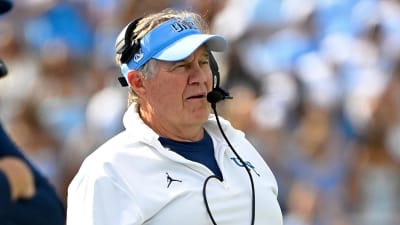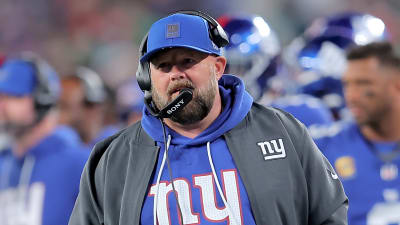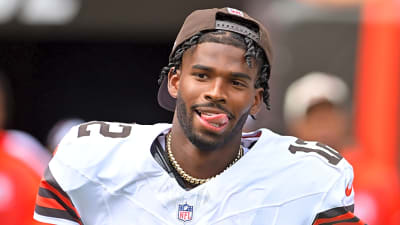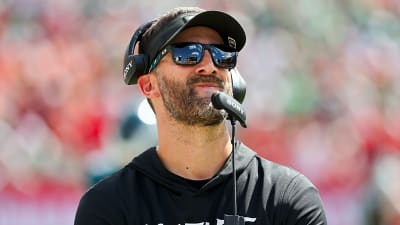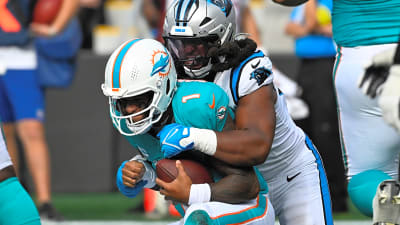
In an era of basketball increasingly dominated by the three-point line and shots at the rim, the midrange jumper has become a lost art. Yet, for a generation of fans, that 15-to-20-foot space was where legends were made. When thinking of midrange masters, names like Kobe Bryant, Kevin Garnett, and Michael Jordan often come to mind. However, a recent analysis by Kirk Goldsberry for The Ringer has provided a stunning visual confirmation of what many Dallas Mavericks fans have known for decades: the true king of the court’s middle ground was a 7-foot German powerhouse. This data cements the legacy of Dirk Nowitzki, best midrange shooter of the modern era, and provides a new lens through which to appreciate his revolutionary career.
The Chart That Changed the Conversation On Dirk Nowitzki
In a piece celebrating the past 25 years of the NBA, Kirk Goldsberry created a “Kings of the Court” shot chart, dividing the floor into hexagonal zones and identifying the player who scored the most points from each area since 2000. While modern icons like Stephen Curry and LeBron James dominate the three-point line and the rim, respectively, the vast territory in between belongs to the Dallas Mavericks big man.
The chart is a sea of Nowitzki’s name. He outscored every other player in the league over the last quarter-century in five distinct midrange zones. From the left baseline to the top of the key, his offensive footprint is undeniable. As Goldsberry himself noted, “Holy Nowitzki! Dirk owns the midrange… With all due respect to Kevin Durant and Kobe Bryant, when you think of midrange greatness over the past 25 years, you have to start with the big German guy.”
This visualization isn’t just a fun piece of trivia; it’s statistical proof of Nowitzki’s unique genius. He combined elite efficiency with incredible volume from an area of the floor that is notoriously difficult. His signature one-legged fadeaway, a shot that was virtually unguardable, became the most lethal weapon in the NBA. Defenders were left helpless as the 7-footer created space and launched a high-arcing shot that was pure poetry in motion. In an analytics-driven age that has largely abandoned the midrange, Nowitzki’s chart serves as a powerful reminder of how a single player can achieve mastery by perfecting a difficult craft.
A Revolutionary Career and an Unforgettable Championship
Dirk Nowitzki’s legacy extends far beyond his midrange prowess. When he entered the league in 1998, the idea of a 7-foot power forward who could shoot like a guard was revolutionary. He shattered the mold of the traditional big man, who was expected to operate exclusively in the paint. Nowitzki paved the way for the modern “stretch-four” and influenced a generation of players, from Kevin Durant to Nikola Jokic, who have since redefined what is possible for a player of their size.
For 21 seasons, all with the Dallas Mavericks, Nowitzki was the franchise. He led the team to 15 playoff appearances, two NBA Finals, and secured the team’s only championship in 2011. That championship run remains one of the most iconic individual accomplishments in sports history. Leading a team of veterans against the newly formed “Big Three” of the Miami Heat—LeBron James, Dwyane Wade, and Chris Bosh—Nowitzki put on a masterclass in clutch performance.
Facing immense pressure and media scrutiny, he delivered time and again, sealing his place in basketball history. His journey from a “soft” European player, as he was once unfairly labeled, to a resilient champion who brought a title to Dallas is a story of perseverance, loyalty, and unwavering dedication. His career accolades are extensive:
- NBA Champion (2011)
- NBA Finals MVP (2011)
- NBA Most Valuable Player (2007)
- 14-time NBA All-Star
- 12-time All-NBA Team member
- Naismith Memorial Basketball Hall of Fame Inductee
He retired as the sixth-leading scorer in NBA history, a testament to his longevity and the unstoppable nature of his offensive game. He is, without question, the greatest player in the history of the Dallas Mavericks.
Life After Basketball: Dad, Mentor, and Broadcaster
Since retiring in 2019, Dirk Nowitzki has seamlessly transitioned into his post-playing career, embracing new roles with the same grace and humility he displayed on the court. While he remains a trusted advisor to the Mavericks organization, his primary focus has shifted to his family. Nowitzki is a proud father of three, and he speaks with more pride about watching his children’s soccer matches and tennis games than he ever did about his own accomplishments.
“I’ve obviously done my thing, and now I watch them win a match or a basketball game. I’m more proud than I ever was of anything that I’ve ever done,” Nowitzki shared in a recent interview.
He also remains a mentor for the next generation of players. He has offered simple but profound advice to the Mavericks’ No. 1 overall pick, Cooper Flagg, encouraging him to work hard, build a routine, and find veteran leaders to learn from—lessons from his own storied career.
Now, fans will get to see a new side of the Mavericks legend. Nowitzki is set to join Amazon Prime’s NBA broadcast crew, a move he admits he never saw coming. “If you had asked me 10 years ago if this was the way to go, I would’ve said you were out of your mind,” he said. “I didn’t think broadcasting would ever be in my future. But you’ve got to keep an open mind.” This new challenge allows him to stay connected to the game he loves while sharing his unparalleled knowledge with millions of fans.
The Enduring Legacy of a Midrange Master
As the NBA continues to evolve, with its focus on pace and space, the legacy of Dirk Nowitzki becomes even more significant. He was a player who not only changed the geometry of the court but also proved that greatness could be achieved through unconventional means. His one-legged fadeaway is as iconic as Kareem Abdul-Jabbar’s skyhook, a signature move that defined an era.
The analytics may now tell players to avoid the midrange, but for 21 seasons, Dirk Nowitzki turned that very space into his personal kingdom. The charts now prove what we always knew: when it came to the midrange, no one did it better. From his revolutionary skill set to his unwavering loyalty and championship heart, Nowitzki’s impact on the game of basketball is immeasurable and will continue to be celebrated for generations to come.
More must-reads:
- Key Kings player to miss significant time after thumb surgery
- Phillies reportedly make decision on manager Rob Thomson
- The 'Team USA men's basketball coaches' quiz
Breaking News
Trending News
Customize Your Newsletter
 +
+
Get the latest news and rumors, customized to your favorite sports and teams. Emailed daily. Always free!
